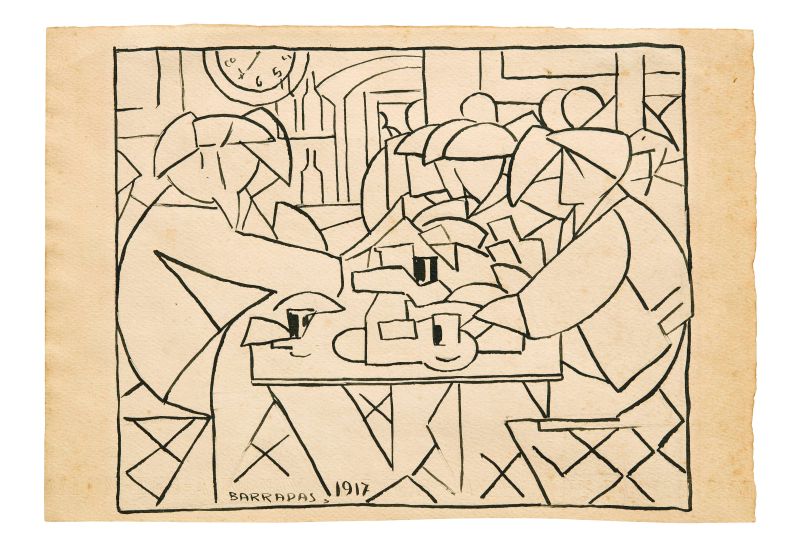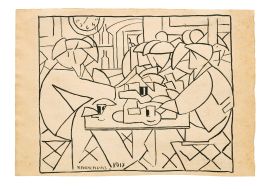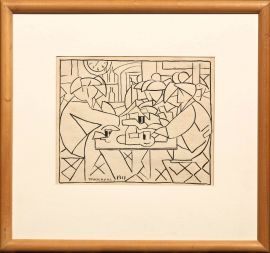Rafael Barradas
(Montevideo 1890 - 1929)
MENSA OPERAIA
1917
firmato e datato “1917” in basso al centro
matita e china su carta
mm 215x260
WORKERS CANTEEN
1917
signed and dated “1917” lower centre
black chalk and Indian ink on paper
8 3/8 by 12 5/16 in
Lasciata Montevideo nel 1913, Barradas giunge in Europa e scopre le principali novità espressive delle avanguardie contemporanee. A Milano, nello stesso anno, assimila i principi del futurismo italiano, che, assieme al simultaneismo e il cubismo, costituiranno una base fondamentale del Vibracionismo, movimento pittorico da lui stesso teorizzato in Spagna, tra il 1917 e il 1920, assieme al compatriota Joaquin Torres Garcia. L’interesse dei due artisti uruguagi si rivolge così al moto frenetico della grande città moderna e dei suoi attori, analizzato in numerosi frammenti di immagini simultanee e volto a generare un’illusione di movimento e di “vibrazione” dall’esterno verso l’interno delle scene. In questo disegno del 1917 troviamo coniugate le nuove teorie di Barradas in un costrutto saldo e ragionato. Tutta la figurazione è infatti giocata su forme geometriche reiterate, a moltiplicare il senso di movimento e l’andamento vertiginoso della composizione. In particolare, le due diagonali su cui sono costruite le teste degli avventori, come inanellate l’una con l’altra, accompagnano l’occhio dell’osservatore nella rapida fuga fino al fondo della sala, conferendo un aumentato senso di profondità a tutta la scena.
Rafael Barradas left Montevideo in 1913 for Europe, where he came into contact with the major new currents in art; that same year in Milan, he assimilated the principles of Italian Futurism which he took, together with Simultaneism and Cubism, as the foundation of Vibracionismo, the avant-garde pictorial movement he theorised in Spain between 1917 and 1920, with his compatriot Joaquín Torres García. The interest of the two Uruguayan artists centred on the frenetic movement of the modern big city and its actors; they analysed it in numerous fragments of simultaneous images intended to generate an illusion of movement and “vibration” from the outside toward the interior of the scene. In this drawing, dated 1917, Barradas’ new theories unite in a sound and well-reasoned construct. Its figuration plays out entirely in reiterated geometric forms to multiply the sense of movement and the vertiginous progression of the composition. In particular, the two diagonals on which the heads of the patrons are constructed, as though linked the one to the next, accompany the eye of the observer along a perspective fast track to the back of the room, lending greatly increased depth to the scene.






